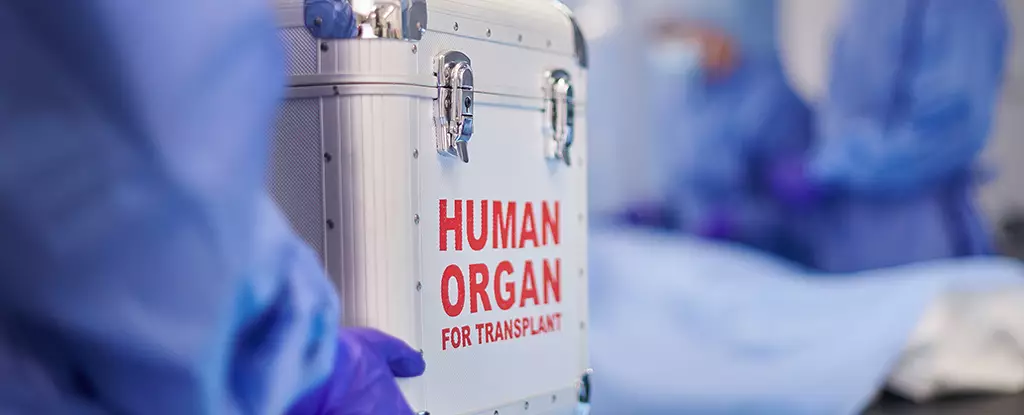In a troubling incident from Kentucky, a man awakening as surgeons prepared to harvest his organs has ignited serious inquiries about the protocols governing the determination of death in the context of organ donation. This alarming case concerns 36-year-old Anthony Thomas “TJ” Hoover II, who, against all odds, exhibited signs of life during a surgical procedure intended to facilitate organ donation. The chilling revelations were brought to light by whistleblower Nyckoletta Martin, who worked as an organ preservationist for Kentucky Organ Donor Affiliates (KODA). Her personal account has raised vital questions about the adequacy of current practices and the need for stringent reforms in life-and-death evaluations.
As the account details, Hoover’s life hung in balance following a drug overdose, and he was declared brain dead after experiencing cardiac arrest. Despite meeting the criteria for organ donation as per his wishes, the unforeseen event of him waking up during the procedure pulled the rug out from under what was deemed a routine operation. Martin, in her testimony to the US House of Representatives, described a heart-wrenching scene—Hoover thrashing on the operating table and crying out, indications that sharply contradicted the medical assumptions made prior to the surgery.
This heartbreaking narrative poses significant ethical concerns while raising a fundamental question: How does the medical community define death, particularly when it comes to organ donation?
The unfolding of events in Hoover’s case exposes the potential systemic failures within the US organ donation network. According to reports from National Public Radio (NPR), the situation sparked a chaotic environment among healthcare professionals, culminating in unease and uncertainty about the course of the procedure. One surgeon reportedly decided to withdraw from the operation entirely, indicating a fractious atmosphere rippling through the surgical team.
This scenario hints at a larger issue within the organ procurement system, which must navigate complex ethical, medical, and emotional landscapes. The health sector has a responsibility to ensure that life and death determinations are both rigorous and transparent. The case accentuates the urgent need for clarity and adherence to established medical protocols that conclusively ascertain a patient’s status prior to proceeding with organ harvesting.
While KODA has asserted that protocols were correctly followed, the discrepancies raised by Martin’s account cannot be overlooked. With a critical incident like this, the public’s confidence in organ donation processes erodes, bearing direct consequences on future donations as well as life-saving transplants.
Organ transplantation is indeed a pressing healthcare issue in the United States, where the demand vastly outweighs supply. Reports indicate that more than 100,000 patients are on waiting lists for transplants, yet fewer than half that number received successful organ transplants last year. The chasm between need and availability accentuates the dire necessity for an organized and effective organ donation framework.
Efforts must be made to reconcile the ethical complexities surrounding organ donation with practical realities. Setting stringent criteria intending to ensure that patients are declared brain dead must balance the risks of prematurely ruling out potential organ donors. Hence, determining the criteria requires an intricate understanding of medical science, holistic patient assessment, and transparent communication between families and healthcare providers. The repercussions of getting it wrong could be catastrophic, not just for families but also in terms of public trust in the medical system.
As discussions around this case continue in legislative circles, it points to a critical juncture for the US healthcare system—a call to action for reform that prioritizes patient safety while upholding the integrity of the organ donation process. Implementing stricter guidelines and enhancing training for medical personnel in determining death could improve overall outcomes and restore public confidence.
Moreover, systematic oversight by independent bodies may yield more transparent processes and accountability. Investigations into incidents like Hoover’s must lead not only to understanding what went wrong but also to how similar incidents can be avoided in the future.
The horror exhibited in this Kentucky case may well be considered an outlier, but it shines a spotlight on an area in need of extensive review and improvement. The lessons gleaned from this experience are invaluable, pressing the medical community towards a future where the sanctity of life and ethical protocols in organ donation are not just coexisting but are harmoniously aligned.


Leave a Reply